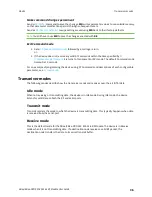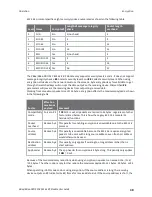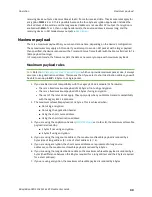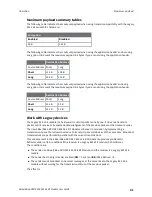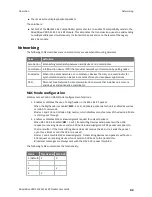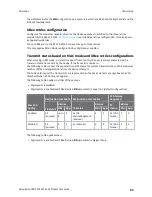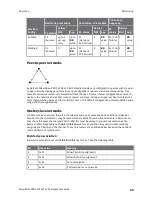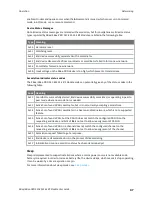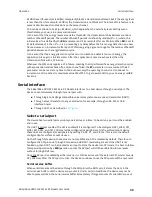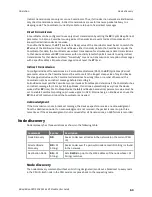
Operation
Serial interface
XBee/XBee-PRO S2C 802.15.4 RF Module User Guide
50
to the device such that the serial receive buffer would overflow, then it discards new data. If the UART
is in use, you can avoid this by the host side honoring CTS flow control.
Serial transmit buffer
When the device receives RF data, it moves the data into the serial transmit buffer and sends it out
the UART or SPI port. If the serial transmit buffer becomes full and the system buffers are also full,
then it drops the entire RF data packet. Whenever the device receives data faster than it can process
and transmit the data out the serial port, there is a potential of dropping data.
UART data flow
Devices that have a UART interface connect directly to the pins of the XBee/XBee-PRO S2C 802.15.4
RF Module as shown in the following figure. The figure shows system data flow in a UART-interfaced
environment. Low-asserted signals have a horizontal line over the signal name.
Serial data
A device sends data to the XBee/XBee-PRO S2C 802.15.4 RF Module's UART through TH pin 3/SMT pin
4 DIN as an asynchronous serial signal. When the device is not transmitting data, the signals should
idle high.
For serial communication to occur, you must configure the UART of both devices (the microcontroller
and the XBee/XBee-PRO S2C 802.15.4 RF Module) with compatible settings for the baud rate, parity,
start bits, stop bits, and data bits.
Each data byte consists of a start bit (low), 8 data bits (least significant bit first) and a stop bit (high).
The following diagram illustrates the serial bit pattern of data passing through the device. The
diagram shows UART data packet 0x1F (decimal number 31) as transmitted through the device.

